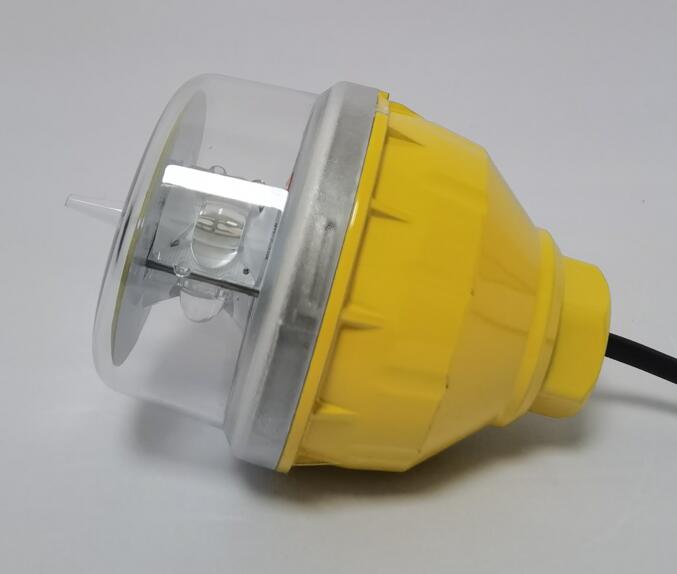When it comes to aviation safety, every detail matters. Among the many components that keep our skies safe, the FAA L-810 obstruction light stands out as a critical tool for preventing collisions and ensuring compliance with aviation regulations. Designed to meet stringent Federal Aviation Administration (FAA) standards, this lighting system plays a vital role in marking tall structures and safeguarding air traffic. In this article, we’ll explore the features, applications, and importance of the FAA L-810 obstruction light, and why it’s a trusted choice for aviation safety worldwide.
What Is the FAA L-810 Obstruction Light?
The FAA L-810 obstruction light is a type of red aviation warning light specifically designed to mark tall structures that could pose a hazard to low-flying aircraft. It is part of the FAA’s lighting standards for obstruction marking, ensuring that structures like communication towers, wind turbines, and buildings are visible to pilots, especially during nighttime or low-visibility conditions. The L-810 light is known for its durability, reliability, and compliance with FAA regulations.
Key Features of the FAA L-810 Obstruction Light
The FAA L-810 obstruction light is engineered to meet the highest standards of performance and safety. Here are some of its standout features:
High Visibility: The L-810 emits a bright red light that is easily visible from a distance, ensuring that pilots can identify obstacles in their flight path.

Durability: Built to withstand harsh environmental conditions, the L-810 is resistant to weather, UV exposure, and corrosion, making it suitable for both urban and remote locations.
Energy Efficiency: Many modern L-810 lights use LED technology, which consumes less power while providing consistent illumination. This reduces operational costs and environmental impact.
| faa l 810 obstruction light |
| faa l 810 obstruction lights |
Compliance with FAA Standards: The L-810 meets FAA AC 150/5345-43H specifications, ensuring it is approved for use on structures that require obstruction lighting.
Easy Installation and Maintenance: Designed for practicality, the L-810 is easy to install and requires minimal maintenance, making it a cost-effective solution for long-term use.
Applications of the FAA L-810 Obstruction Light
The FAA L-810 obstruction light is widely used across various industries to enhance aviation safety. Some common applications include:
Communication Towers: These towers, often located in remote or elevated areas, rely on L-810 lights to alert pilots to their presence, particularly during nighttime operations.
Wind Turbines: As wind farms expand, the need for reliable obstruction lighting grows. The L-810 is a popular choice for marking wind turbines, ensuring they are visible to low-flying aircraft.
Skyscrapers and High-Rise Buildings: In urban areas, tall buildings are equipped with L-810 lights to prevent collisions with helicopters and other low-altitude aircraft.
Bridges and Power Lines: Tall bridges and high-voltage power lines also use L-810 lights to mark their presence, particularly in areas with heavy air traffic.
Why the FAA L-810 Obstruction Light Matters
The FAA L-810 obstruction light is more than just a regulatory requirement—it’s a lifesaving tool. Here’s why it matters:
Preventing Collisions: By marking tall structures, the L-810 helps pilots avoid obstacles, reducing the risk of accidents and saving lives.
Ensuring Regulatory Compliance: The use of L-810 lights ensures that structures comply with FAA regulations, avoiding potential fines and legal issues.
Protecting Infrastructure: By preventing collisions, the L-810 also safeguards the structures it marks, reducing the risk of damage and costly repairs.
Enhancing Safety in Low Visibility: During fog, rain, or darkness, the L-810 provides a reliable visual reference for pilots, helping them navigate safely.
Technological Advancements in Obstruction Lighting
The FAA L-810 obstruction light has evolved over the years, incorporating advancements in lighting technology. Modern L-810 lights often feature:
LED Technology: LEDs offer brighter illumination, lower energy consumption, and longer lifespans compared to traditional incandescent bulbs.
Smart Lighting Systems: Some L-810 lights are equipped with sensors that adjust brightness based on ambient light conditions, improving visibility while conserving energy.
Solar-Powered Options: For remote or off-grid locations, solar-powered L-810 lights provide a sustainable and reliable solution.
The FAA L-810 obstruction light is a cornerstone of aviation safety, ensuring that tall structures are visible to pilots and reducing the risk of collisions. Its durability, energy efficiency, and compliance with FAA standards make it a trusted choice for industries worldwide. As air traffic continues to grow and urban landscapes become more crowded, the importance of reliable obstruction lighting cannot be overstated.
Whether you’re managing a wind farm, constructing a skyscraper, or maintaining communication towers, the FAA L-810 obstruction light is an essential tool for keeping our skies safe. By investing in this proven lighting solution, you’re not just meeting regulatory requirements—you’re contributing to a safer future for aviation.